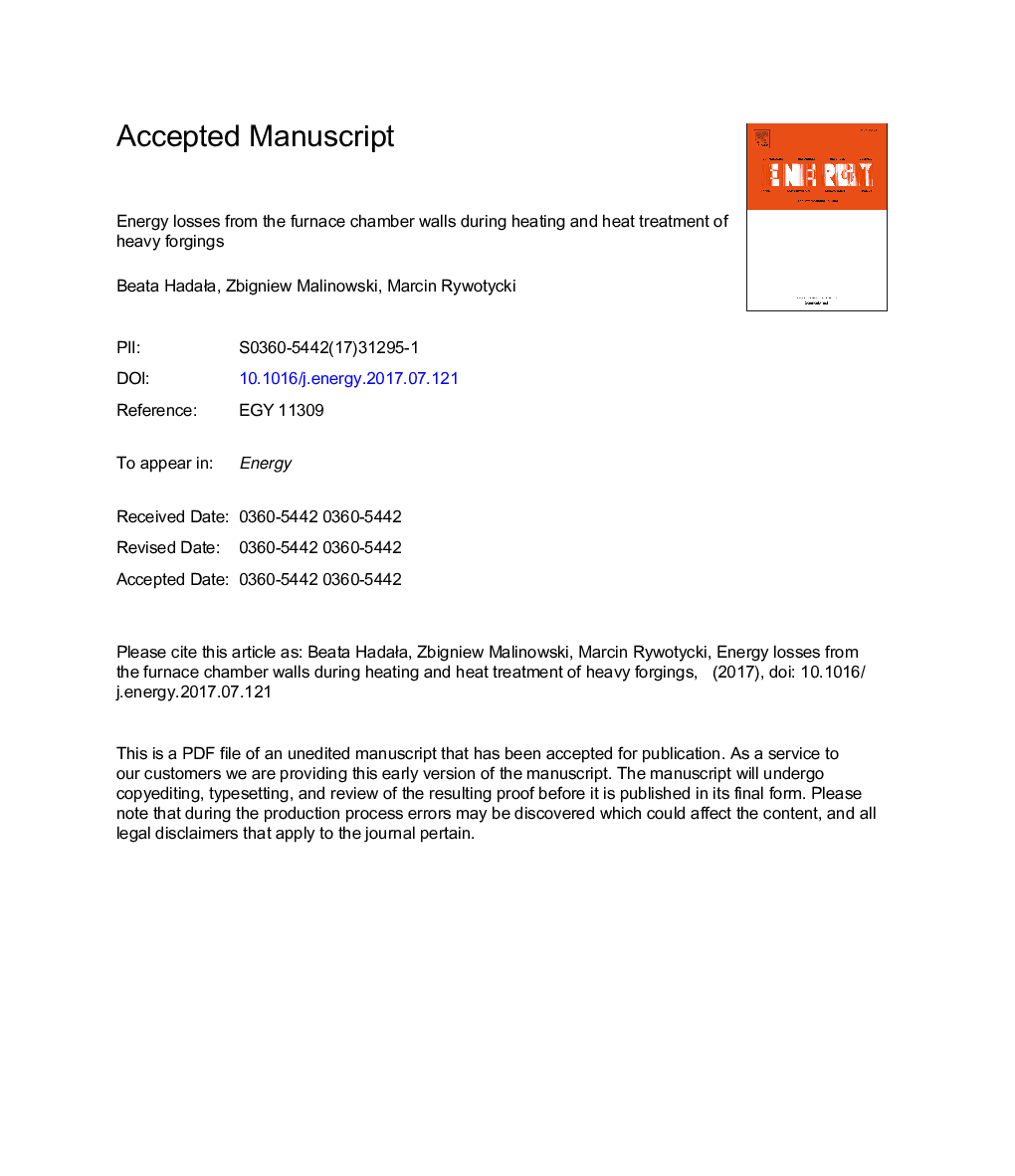| Article ID | Journal | Published Year | Pages | File Type |
|---|---|---|---|---|
| 5475604 | Energy | 2017 | 59 Pages |
Abstract
The boundary condition models at the inner and outer surface of the furnace wall have been developed taking into account heat transfer due to radiation and convection. The furnace wall temperature has been calculated from the finite element solution to the transient heat conduction equation. The boundary condition model has been validated using measurements on the laboratory furnace. The heat losses from the chamber walls have been calculated for selected wall structures and modes of the furnace operation. The results of computations have shown essential differences in the energy losses. It has been shown that the total heat losses depend on the chamber wall insulation and on the furnace operation mode for the most types of insulations. The best insulation effect has given the chamber wall made of the two types of the mineral fiber slabs. For this wall the total energy losses below 100Â MJ/m2 has been obtained over 8 days of the furnace operation. Further, low sensitivity to the furnace operation mode has been noticed. This wall insulation can be utilized for heating ingots to the high temperatures and for the heat treatment processes characterized by a long time of the furnace operation.
Keywords
Related Topics
Physical Sciences and Engineering
Energy
Energy (General)
Authors
Beata HadaÅa, Zbigniew Malinowski, Marcin Rywotycki,
